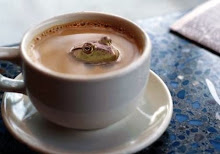-
 All rights reserved by petrus01
All rights reserved by petrus01
THINKING OF INKING?
Anyone who watches sports, music videos, or even A&E knows that tattoos have gone mainstream; studies have found that as many of two out of five adults, younger than 40 have one. Health experts agree that getting one is less risky than ever, and tattooists trained in fine arts offer more options. But before you rush to go under the needle, avoid regret (and possibly a pricey removal) by considering these questions:
What will it look like?
Photorealist
Thanks to modern inks and techniques, portraits and images get far closer to the ideal of "realism" than one from decades past.
Biomechanical
Credit the "Allen" movies with inspiring this branch of surrealism, which depicts a combination of human and robot-like parts.
Surrealist
Just like the 20th centuray arts movement, this style covers everything from Salvador Dali to fantasy monsters and incoherent nightmares.
Fine line black and gray
This technique, pioneered in the mid-1979s in Los Angeles, involves subtly shaded, intricate designs and portraits rendered without color.
Tribal
A modern U.S. trend sprang up in the mid-1980s, imitating the bold geometric tattoos common in many ancient tribal cultures.
Asian
Large symbolic designs, particularly Japanese koi morphing into dragons are popular theme for arm "sleeves."
Traditional American
Think Betty Boop, an anchor, or "mom" in a heart. Before the 1970s, this was the only true style in the United States, when people collected tattoos like stamps. Designs were usually small with crisp lines, few colors and little subtlety.
Flash
Not a style, but a name given to the printed designs on the walls of a tattoo shop. Beware as flash designs are often trendy, then outdated. Remember Tasmanian Devils in the 1980s?
How will it get there?
Epidermis, the skin's outer layer acts like a tinted window over the tattoo.
Each needle injects ink a drop at a time, 1-2 millimeters below the skin's surface.
Dermis is the target area. Here antibodies surround the ink and trap it in place.
If the needle reaches the subcutaneous fat, the ink will immediately spread and blur.
Machine
Using the basic technology of a doorbell, the gizmo was first patented in 1891 and has changed little since 1929.
Needle
A needle can puncture the skin up to 3,000 times per minute.
Lines
Small groupings needles (often three but sometimes just one) draw the sharp,distinct outlines.
Shading, Coloring
Large groups up to 32 needles are splayed out in rows like the bristles of a paint brush.
How Will it Feel?
Pain tolerance varies by person, but in general:
-The fewer the needles, the more it hurts.
-Bondy areas don't necessarily hurt more. A better indicator is ski softness; Inner thights, inner arms, and torso are often extremely tender.
-Artists say women tend to handle the pain better than men.
Tattoos in areas with soft skin tend to be more painful.
Reputable artists use sterile needles, disposable gloves and antiseptic creams.
Where should it go?
Sun exposure
Sun fades tattoos. Plan to use strong sunblock all the time or get the tattoo in a well covered place.
Aging
Tattoos in squishier areas such as the midsection will lose their shape much more quickly than those in bonier areas.
Trendiness
Ar bands and lower back "tramp stamps" are no longer popular in many areas.
Durability
Tattoos on feet and hands tend to fade or become uneven quickly because those parts get so much use.


No comments:
Post a Comment